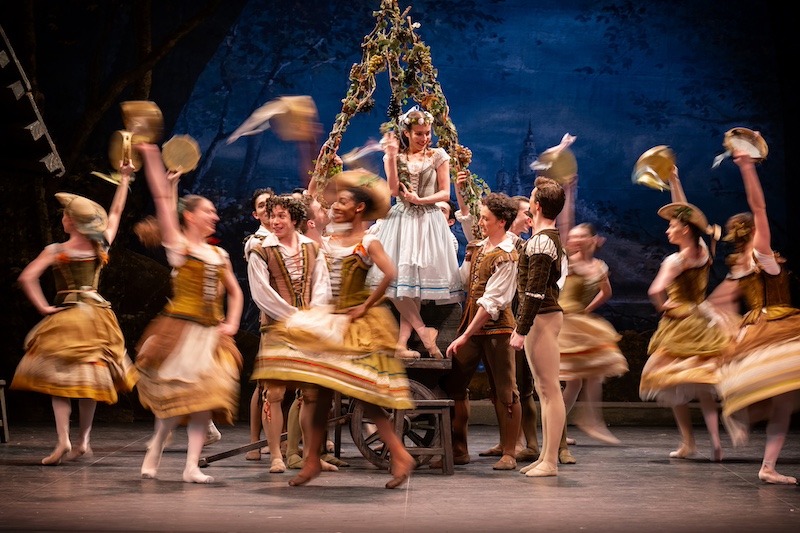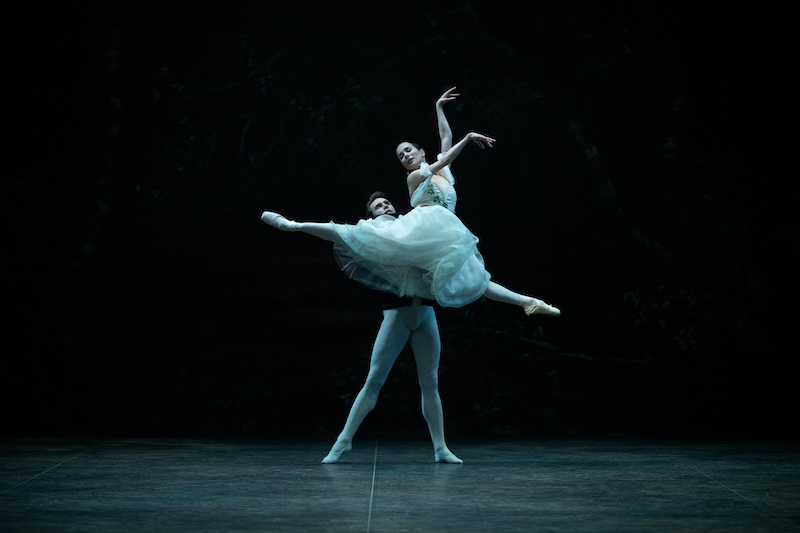We’re used to the idea of 19th century ballets being updated, but the Giselle currently presented by English National Ballet takes it the other way.
This production, itself more than 50 years old, offers the closest possible experience of a Romantic ballet as it might have been in the mid-1800s – minus the gas lighting and noisy stage machinery. It’s as if a thick layer of dust has been blown from an old, foxed etching, revealing its delicate lines and textures, heightening its emotional force.
The specialness of Mary Skeaping’s production – the culmination of a lifetime’s research – drew ballet royalty to the opening night, including several renowned exponents of the leading roles. Even before curtain-up it was possible to spot two world-class Giselles from other ballet companies chatting at the bar. This 10-night run is significant for another reason too. It’s ENB’s first presentation of a classic under new artistic director Aaron S Watkin, and all eyes are on whether he can maintain the standards set by his predecessor Tamara Rojo. The challenges of this particular work are immense in what is famously an evening of two wildly distinct halves. The first inhabits the “real” world of a Rhineland village (pictured above). The second takes us into a forest at night where the vindictive ghosts of young women who died before their wedding night rise from their graves to hunt down any man foolish enough to be there, forcing him to dance till he dies of exhaustion. Think the plot of The Red Shoes, but with the boot on the other foot.
The challenges of this particular work are immense in what is famously an evening of two wildly distinct halves. The first inhabits the “real” world of a Rhineland village (pictured above). The second takes us into a forest at night where the vindictive ghosts of young women who died before their wedding night rise from their graves to hunt down any man foolish enough to be there, forcing him to dance till he dies of exhaustion. Think the plot of The Red Shoes, but with the boot on the other foot.
The twist is that Giselle, the young village girl who dies of a broken heart, does not feel the need to take vengeance. Quite the reverse. In death, as a newly inducted Wili, she protects her duplicitous lover Albrecht from the deadly commands of Myrtha, the Wilis' Queen. Shielding him with the force of her love and forgiveness, she conjures up ever more exquisite dance sequences to distract her ghoulish sisters from their mission. Yes, these women are fierce, and Hollywood has surely missed a trick to date by not building a horror franchise around them. The challenge for the corps de ballet (pictured above) is largely technical. In a wordless medium, the Wilis' power to terrorise can come only from their dancing and their precision delivery of the choreography as a single ruthless force, running circles (literally) around their victims, or advancing menacingly upon them in a gang. Their bridal gowns – a little grimy at the hem – only heighten the sense of abomination. The solo role of Myrtha (a superb Alison McWhinney on opening night) is critical too. Within the Romantic style and its drifting thistledown movements, she must find an unyielding hardness and cruelty, and never, ever smile.
The challenge for the corps de ballet (pictured above) is largely technical. In a wordless medium, the Wilis' power to terrorise can come only from their dancing and their precision delivery of the choreography as a single ruthless force, running circles (literally) around their victims, or advancing menacingly upon them in a gang. Their bridal gowns – a little grimy at the hem – only heighten the sense of abomination. The solo role of Myrtha (a superb Alison McWhinney on opening night) is critical too. Within the Romantic style and its drifting thistledown movements, she must find an unyielding hardness and cruelty, and never, ever smile.
The Ukraine-born Katja Khaniukova was our Giselle on opening night and she was exceptional, giving an impression of extreme youth, freshness and vulnerability without ever once appearing to act. She also left no one in any doubt of Giselle’s passion for dancing, of her habit of seeing an empty space and wanting to fill it with intricate steps. And so weightlessly! In her opening shy duet with Albrecht, you barely hear a footfall, despite the growing confidence and height of their jumps. Aitor Arrieta makes a perfect Albrecht for Khaniukova – even their facial profiles match – and his exquisite manners and lovely line make it easy to see why a young girl would fall for this aristo-in-peasant-guise, because we fall for him too. In Act I he opts to play his character less as a cad than a man besotted, which helps make sense of the depth and bewilderment of his grief in Act II. And when Giselle’s delaying tactics finally run out of road in her defiance of the Wilis, and the exhausted Albrecht is forced to fling himself through one last lung-bursting round of entrechats, Arrieta finds the energy to convince us that this could be for real. His final collapse is frightening.
Aitor Arrieta makes a perfect Albrecht for Khaniukova – even their facial profiles match – and his exquisite manners and lovely line make it easy to see why a young girl would fall for this aristo-in-peasant-guise, because we fall for him too. In Act I he opts to play his character less as a cad than a man besotted, which helps make sense of the depth and bewilderment of his grief in Act II. And when Giselle’s delaying tactics finally run out of road in her defiance of the Wilis, and the exhausted Albrecht is forced to fling himself through one last lung-bursting round of entrechats, Arrieta finds the energy to convince us that this could be for real. His final collapse is frightening.
There are many such moments of suspense in this production and much thought has gone into the dramatic pacing. Gavin Sutherland whips Adoph Adams’ score along at a terrific lick, and the players of the English National Ballet Philharmonic seem to relish it. There is a very special moment, though, when the earth seems to slow on its axis. I have never seen the Act II adage between the central pair performed so slowly, or so tenderly, and here it appears it’s only the vibrations of pianissimo strings that are holding Giselle aloft. Can this magic happen every night? When a company is operating at this level of skill and preparation, I imagine it will.














Add comment